Abstract
Sisomicin is a new antibiotic produced by Micromonospora inyoensis. The in vitro activities of sisomicin, gentamicin, and tobramycin, three similar aminoglycosides, were determined against 228 clinical isolates representing 10 genera of common pathogens. No difference was noted in the activities of these antimicrobial agents when assayed by a standard broth dilution technique against Klebsiella, Enterobacter, Escherichia, Salmonella, Citrobacter, enterococci, or Staphylococcus aureus. Sisomicin was significantly more active than tobramycin against Serratia and indole-positive Proteus strains. Sisomicin was significantly more active than gentamicin against indole-negative Proteus strains and slightly more active against indole-positive Proteus strains. Tobramycin was more active than sisomicin or gentamicin against Pseudomonas and indole-negative Proteus strains. Gram-negative bacilli resistant to one of the three antimicrobial agents were not necessarily resistant to either of the other two. Activity of sisomicin was independent of the susceptibility or resistance of these isolates to nine other antimicrobial agents as assayed by the Bauer-Kirby technique. The presence of 50% human serum did not antagonize the in vitro activity of sisomicin against gram-negative isolates. Because sisomicin showed certain advantages over gentamicin or tobramycin in vitro, further investigation of this new antimicrobial agent is warranted.
Full text
PDF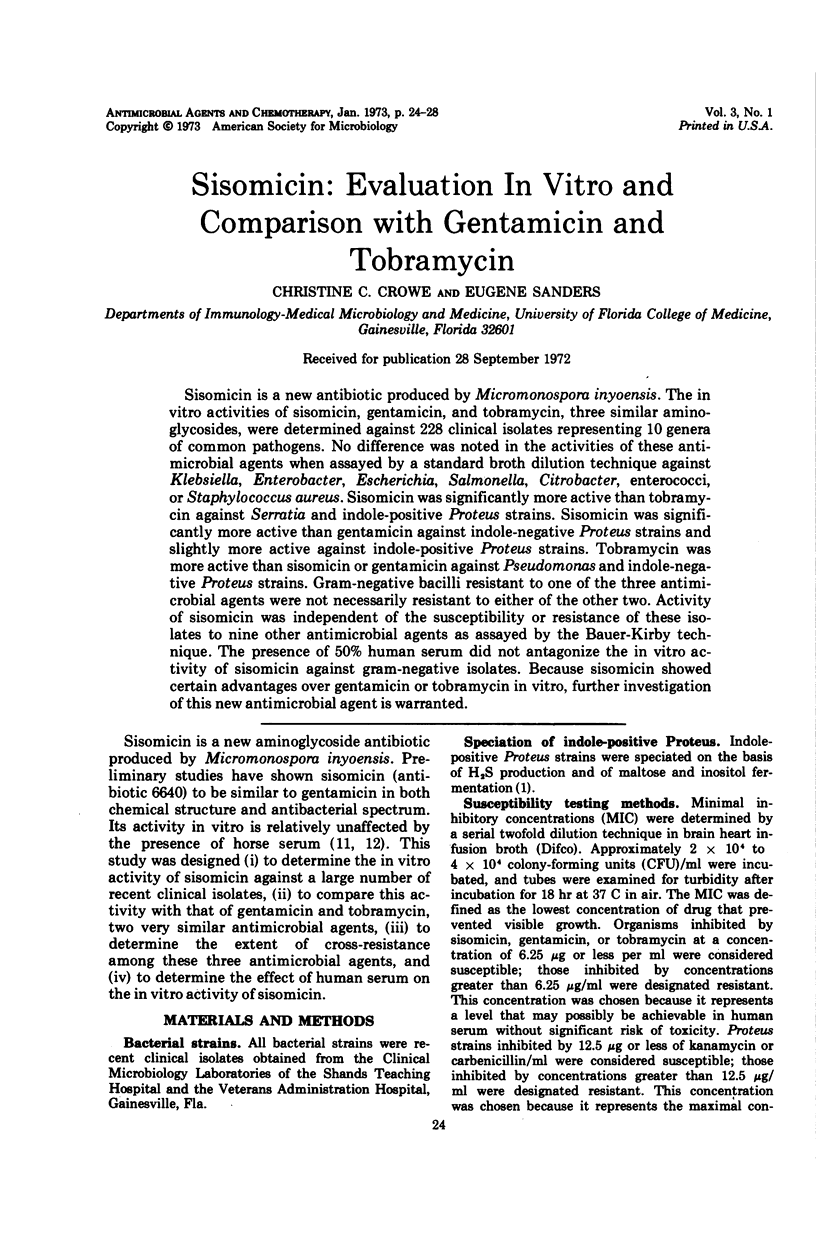
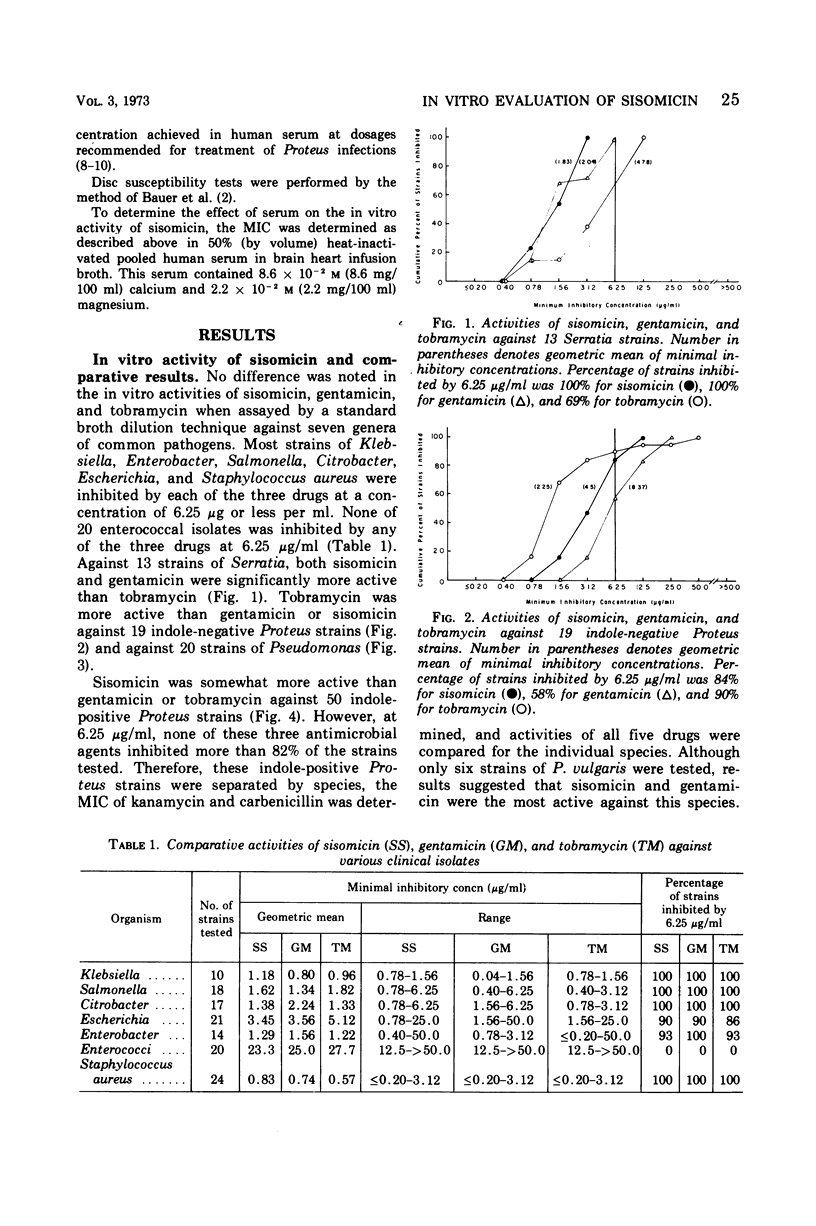
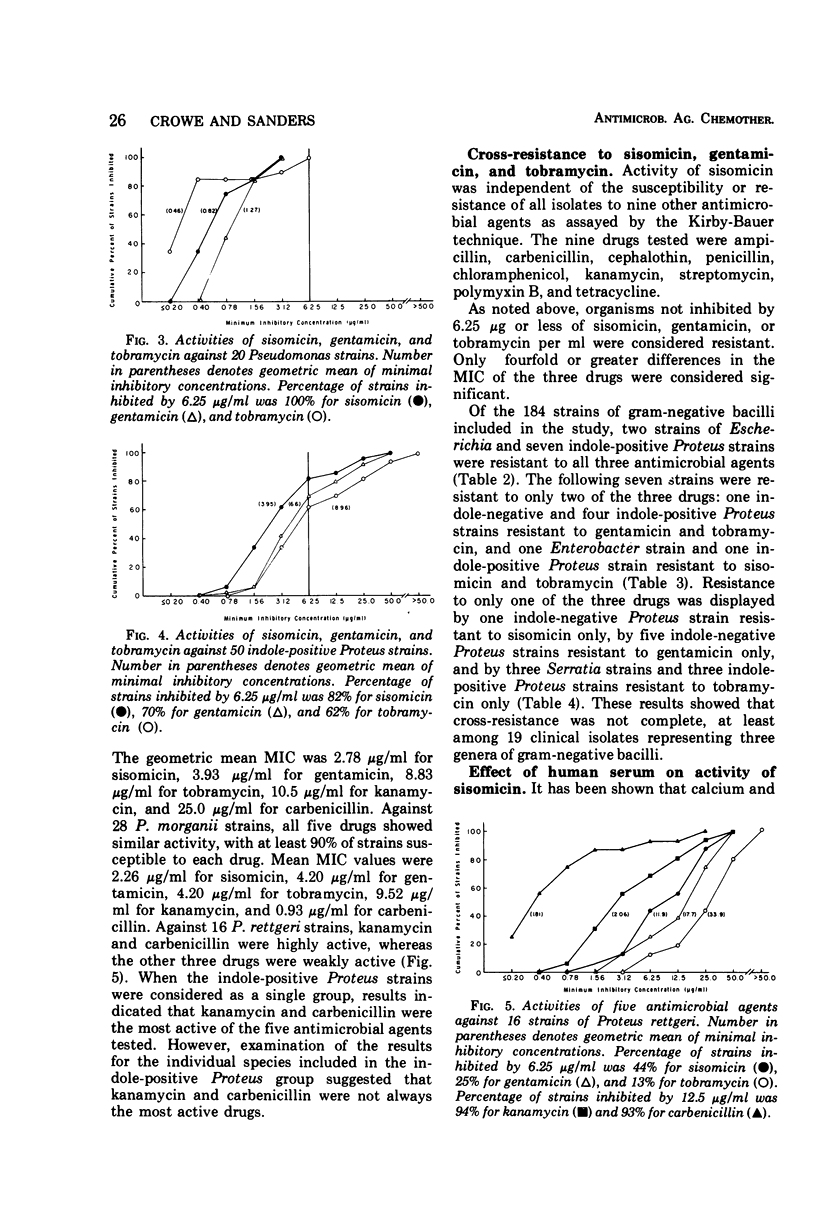
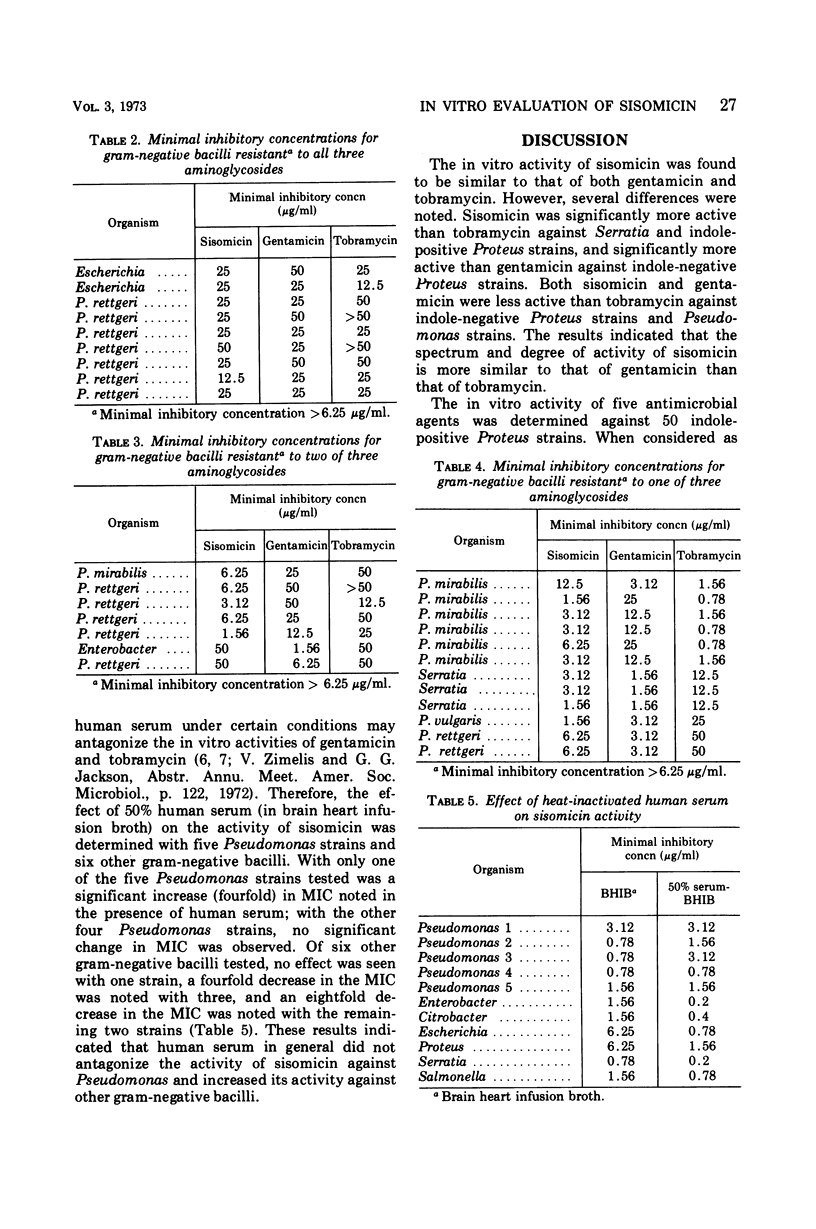
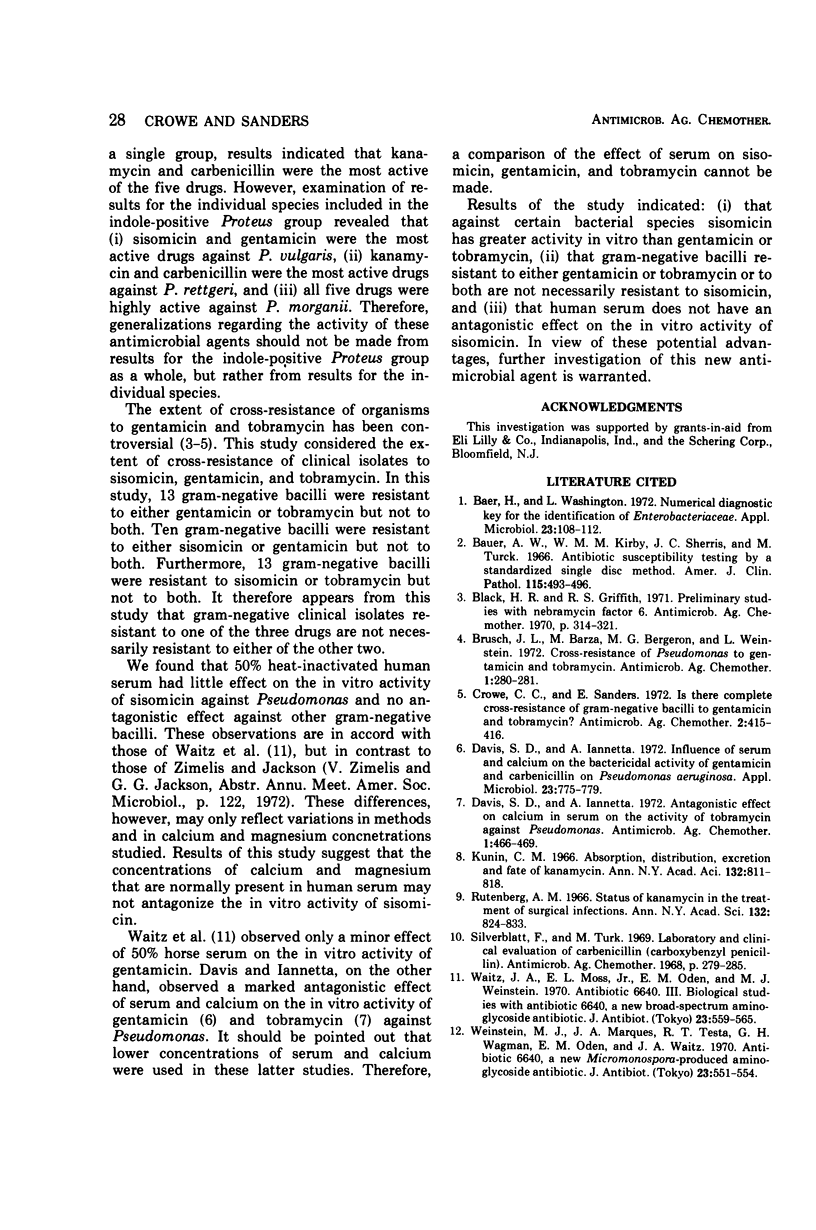
Selected References
These references are in PubMed. This may not be the complete list of references from this article.
- Baer H., Washington L. Numerical diagnostic key for the identification of Enterobacteriaceae. Appl Microbiol. 1972 Jan;23(1):108–112. doi: 10.1128/am.23.1.108-112.1972. [DOI] [PMC free article] [PubMed] [Google Scholar]
- Bauer A. W., Kirby W. M., Sherris J. C., Turck M. Antibiotic susceptibility testing by a standardized single disk method. Am J Clin Pathol. 1966 Apr;45(4):493–496. [PubMed] [Google Scholar]
- Black H. R., Griffith R. S. Preliminary studies with nebramycin factor 6. Antimicrob Agents Chemother (Bethesda) 1970;10:314–321. [PubMed] [Google Scholar]
- Brusch J. L., Barza M., Bergeron M. G., Weinstein L. Cross-resistance of Pseudomonas to gentamicin and tobramycin. Antimicrob Agents Chemother. 1972 Mar;1(3):280–281. doi: 10.1128/aac.1.3.280. [DOI] [PMC free article] [PubMed] [Google Scholar]
- Crowe C. C., Sanders E. Is there complete cross-resistance of gram-negative bacilli to gentamicin and tobramycin? Antimicrob Agents Chemother. 1972 Nov;2(5):415–416. doi: 10.1128/aac.2.5.415. [DOI] [PMC free article] [PubMed] [Google Scholar]
- Davis S. D., Iannetta A. Antagonistic effect of calcium in serum on the activity of tobramycin against Pseudomonas. Antimicrob Agents Chemother. 1972 Jun;1(6):466–469. doi: 10.1128/aac.1.6.466. [DOI] [PMC free article] [PubMed] [Google Scholar]
- Davis S. D., Iannetta A. Influence of serum and calcium on the bactericidal activity of gentamicin and carbenicillin on Pseudomonas aeruginosa. Appl Microbiol. 1972 Apr;23(4):775–779. doi: 10.1128/am.23.4.775-779.1972. [DOI] [PMC free article] [PubMed] [Google Scholar]
- Kunin C. M. Absorption, distribution, excretion and fate of kanamycin. Ann N Y Acad Sci. 1966 Jun 14;132(2):811–818. doi: 10.1111/j.1749-6632.1966.tb42999.x. [DOI] [PubMed] [Google Scholar]
- Rutenburg A. M. Status of kanamycin in the treatment of surgical infections. Ann N Y Acad Sci. 1966 Jun 14;132(2):824–833. doi: 10.1111/j.1749-6632.1966.tb43001.x. [DOI] [PubMed] [Google Scholar]
- Silverblatt F., Turck M. Laboratory and clinical evaluation of carbenicillin (carboxybenzyl penicillin). Antimicrob Agents Chemother (Bethesda) 1968;8:279–285. [PubMed] [Google Scholar]
- Waitz J. A., Moss E. L., Jr, Oden E. M., Weinstein M. J. Antibiotic 6640. 3. Biological studies with antibiotic 6640, a new broad-spectrum aminoglycoside antibiotic. J Antibiot (Tokyo) 1970 Nov;23(11):559–565. [PubMed] [Google Scholar]
- Weinstein M. J., Marquez J. A., Testa R. T., Wagman G. H., Oden E. M., Waitz J. A. Antibiotic 6640, a new Micromonospora-produced aminoglycoside antibiotic. J Antibiot (Tokyo) 1970 Nov;23(11):551–554. doi: 10.7164/antibiotics.23.551. [DOI] [PubMed] [Google Scholar]


